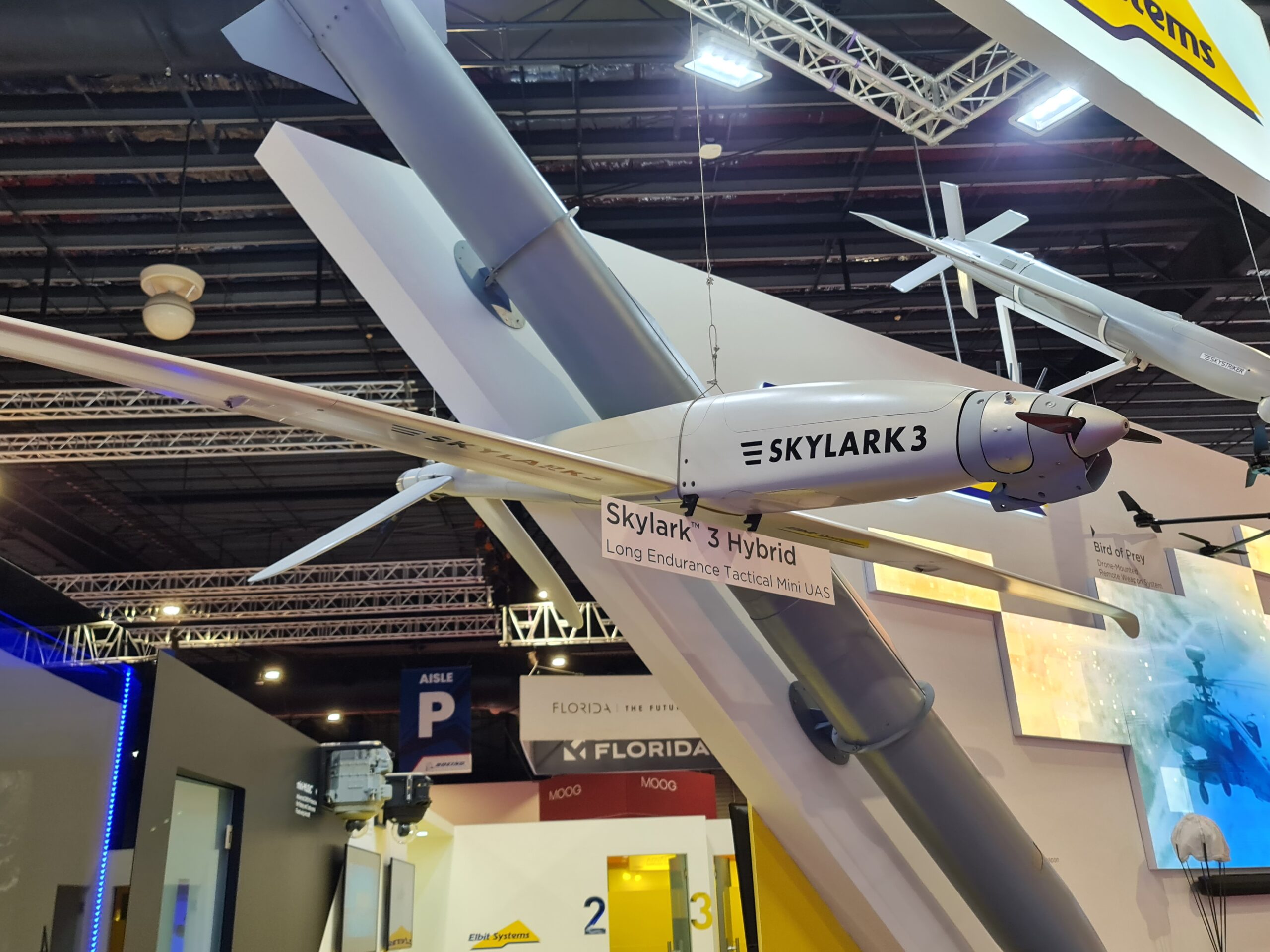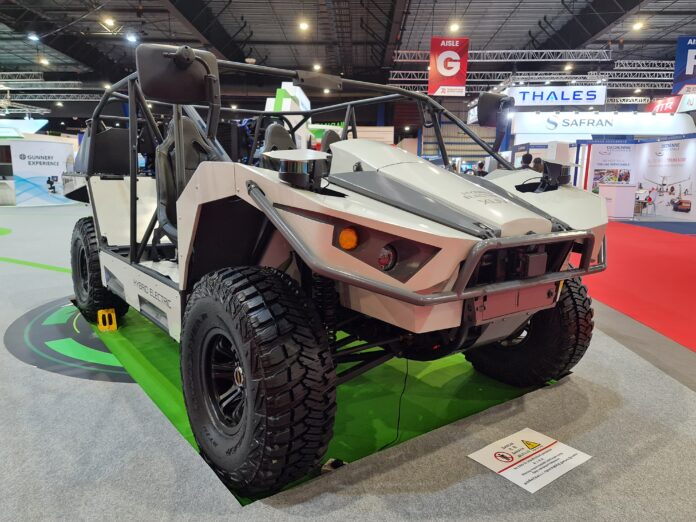Hybrid electric propulsion technology has emerged as one of the highlights at Singapore Airshow 2022, which is being held at the Changi Exhibition centre from 15-18 February.
In the aerial domain, Israeli companies Elbit Systems and Steadicopter are showcasing their new fixed and rotary-wing unmanned aerial vehicles (UAVs) powered by hybrid electric propulsion systems.
Making its debut, Elbit Systems’ Skylark 3 Hybrid Small Tactical Unmanned Aerial Systems (STUAS) offers triple the endurance of conventionally powered models of the Skylark family with up to 18 hours of flight operation and a 120km range while retaining the same compact size and weight, a move which the company says significantly enhances mission effectiveness and cost efficiency.

Elbit Systems said the Skylark 3 Hybrid – which has a 4.7 metre wingspan and a maximum take-off weight (MTOW) of 50kg – will use its internal combustion engine to transit rapidly to an area of operations at altitudes of up to 12,000ft, before engaging its electric motor to loiter over the area. Either method of propulsion is also able to serve as a back up to ensure reliability and safety.
Meanwhile, Steadicopter revealed its hybrid Black Eagle 50H vertical take-off and landing (VTOL) UAV, which combines the capabilities of its petrol Black Eagle 50 and electric Black Eagle 50E platforms.
The baseline Black Eagle 50 has a MTOW of 35kg and can operate for up to 4 hours while carrying a 5kg payload, while the Black Eagle 50E can carry a 15kg payload albeit with a reduced flight endurance of up to 2 hours. In contrast, the hybrid Black Eagle 50H can operate for up to 5 hours with a 12kg payload by exploiting its two methods of propulsion.
In the land domain, Singapore’s ST Engineering is highlighting its push to introduce hybrid electric drive (HED) technology into its existing range of combat vehicles.
“Modern fighting platforms are packed with computers and power hungry electronics: battle management systems, command, control and communications systems, navigation, cameras, and situational awareness equipment, threat detection sensors and active protection systems besides the basic automotive functions,” an ST Engineering representative told AMR.
“These power-hungry systems solely depend on power supplied by the vehicle’s alternator and low-voltage battery systems, which are already at its limits,” the representative added. “[Therefore], we need to rethink how we design fighting vehicles that are relevant for the future battlefield.”

ST Engineering is showcasing its new 8×8 hybrid Terrex infantry fighting vehicle with a QinetiQ hub drive unit and 4×4 cross-country utility vehicle (XUV), which feature a modular architecture that can accommodate a hybrid electric drive (HED) system comprising a diesel-electric generator module, high-voltage battery system as well as a variety of electric drivetrain components such as the axle drives and hub motors.
These are further supported by smart energy management and drive-by-wire controls, which the company claimed to offer a number of tactical advantages, including extended range operations and silent running.













